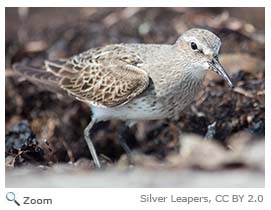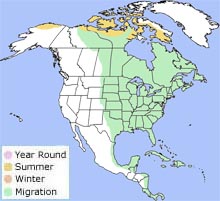White-rumped Sandpiper - Calidris fuscicollis |
|||||||||||
Description
Range |
Habitat
DietThe white-rumped sandpiper forages on the ground or in the water for food. It eats insects, larvae, seeds, worms, mollusks, and crustaceans. Life Cycle
Behavior The white-rumped sandpiper is a long-distance migrator. It migrates in large flocks from the Arctic regions of Canada and Alaska to Argentina at the tip of South America. |
||||||||||
Audio Credit: xeno-canto.org Niels Krabbe |
|||||||||||


 The white-rumped sandpiper breeds
across extreme northern Alaska and Canada. It
The white-rumped sandpiper breeds
across extreme northern Alaska and Canada. It 
